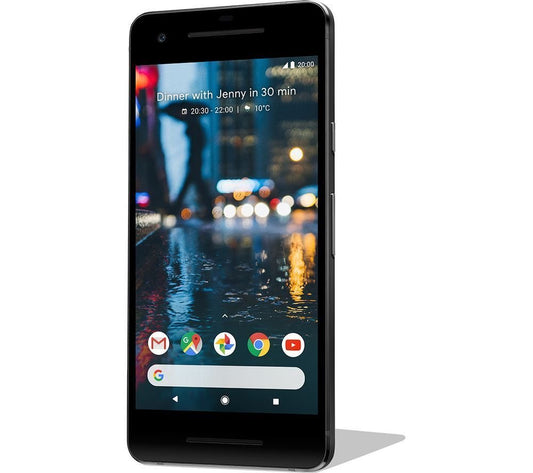Are you excited to make your own Android apps? With Android being the most popular mobile operating system, learning to develop apps can open up a world of opportunities. This guide will help you understand everything from the basics to advanced techniques. By the end, you'll be ready to create and publish your own apps.
Key Takeaways
- Android is the leading mobile operating system, making app development a valuable skill.
- Understanding the basics, like setting up your development environment, is crucial.
- Mastering tools like Android Studio and the Android SDK will boost your development process.
- Learning core components such as activities, intents, and user interface design is essential.
- Ensuring app security and performance is key to creating successful and reliable apps.
Understanding the Basics of Android App Development
The Importance of Android in the Mobile Market
In today's digital world, Android app development is a lucrative field. With over 3 billion active Android devices globally, the potential to reach a vast user base is unparalleled. Android's open-source nature and extensive customization options make it a popular choice among developers and users alike.
Key Concepts and Terminology
Before diving into development, it's crucial to understand some key concepts and terminology:
- Activity: Represents a single screen with a user interface.
- Intent: A messaging object used to request an action from another app component.
- View: The basic building block for user interface components.
- Layout: Defines the structure for a user interface in an app.
Setting Up Your Development Environment
To start developing Android apps, you need to set up your development environment. Here's what you need:
- Android Studio: The official integrated development environment (IDE) for Android app development. Download and install it from the official Android Developer website.
- Java or Kotlin: These are the two official languages for Android development. Kotlin is popular for its modern features and concise syntax, but Java remains a viable choice.
- SDK and Emulator: The Android SDK (Software Development Kit) contains libraries, tools, and APIs necessary for app development. Install it through Android Studio, and create an Android Virtual Device (AVD) to run and test your apps on an emulator.
Setting up your development environment is the first crucial step in your Android app development journey. Make sure to follow the instructions carefully to avoid any issues later on.
Mastering the Android Development Tools
To become a proficient Android app developer, it's crucial to master the tools of the trade. These tools will help you streamline your workflow, enhance productivity, and ensure the quality of your applications.
Introduction to Android Studio
Android Studio is the official Integrated Development Environment (IDE) for Android app development. Developed by Google and JetBrains, it provides a unified environment where you can write, test, and debug your applications. Android Studio supports various devices, including phones, tablets, TVs, and wearables. Key features include a code editor, a flexible build system, and a fast emulator.
Using the Android SDK
The Android Software Development Kit (SDK) is essential for building Android apps. It includes libraries, a debugger, an emulator, and sample code. The SDK works with the Java Development Kit (JDK), so make sure to install the JDK first. The SDK also integrates with other IDEs like Eclipse, although Android Studio is the preferred choice.
Emulators and Real Device Testing
Testing your app is a critical step in the development process. Emulators allow you to simulate different devices on your computer, eliminating the need for multiple physical devices. The AVD Manager in Android Studio lets you create these emulations. However, testing on real devices is also important to catch issues that emulators might miss. Consider using a variety of devices to ensure compatibility and performance.
Mastering these tools will significantly improve your development process, making it easier to create high-quality Android applications.
Learning the Core Components of Android Apps
Activities and Their Lifecycle
Activities are the building blocks of an Android app. They represent a single screen with a user interface. Understanding the lifecycle of an activity is crucial as it helps manage the app's behavior during different states, such as when the app is in the background or when the screen is rotated. Mastering this concept ensures your app runs smoothly and efficiently.
Understanding Intents and Broadcast Receivers
Intents are used to facilitate communication between different components of an Android app. They allow you to launch activities, services, or broadcast messages. Broadcast Receivers, on the other hand, respond to these broadcast messages. Together, they enable seamless interaction within your app and with other apps.
Designing User Interfaces with Views and Layouts
Creating an engaging user interface is essential for any app. Android provides various UI elements known as views and layouts. Views are the basic building blocks, like buttons and text fields, while layouts define the structure for these elements. By combining views and layouts, you can design intuitive and attractive user interfaces for your app.
To explore our comprehensive android tutorial for beginners and experts alike, learn essential app development skills, from Java basics to advanced Kotlin techniques.
Advanced Android Development Techniques
Working with Data Storage and Databases
When developing Android apps, managing data efficiently is crucial. Using databases can make your app more responsive and less dependent on network connectivity. Here are some popular databases used in Android development:
- SQLite
- Realm Mobile Database
- MongoDB
- Redis
- Elasticsearch
- ORMLite
- Berkeley DB
- Couchbase Lite
Implementing Background Tasks and Services
Background tasks are essential for performing operations without interrupting the user experience. Android provides several ways to handle background tasks, such as Services, WorkManager, and AsyncTask. Services are used for long-running operations, while WorkManager is ideal for deferrable, guaranteed background work.
Enhancing User Experience with Animations and Transitions
Animations and transitions can significantly improve the user experience by making the app more engaging. Android offers various tools and libraries to create smooth animations, such as ObjectAnimator, ViewPropertyAnimator, and TransitionManager. Implementing these can make your app feel more dynamic and responsive.
Mastering these advanced techniques will help you create more robust and user-friendly Android applications.
Ensuring App Security and Performance
Best Practices for Secure Coding
In the world of Android app development, security is paramount. Robust security measures are essential to protect user data and maintain trust. Developers should follow best practices such as:
- Implementing strong data encryption
- Using secure communication protocols
- Regularly updating libraries and dependencies
Additionally, it's crucial to avoid hardcoding sensitive information like API keys and passwords within the app.
Optimizing App Performance
Performance optimization ensures that your app runs smoothly and efficiently. Key strategies include:
- Minimizing memory usage
- Reducing battery consumption
- Optimizing network requests
By focusing on these areas, developers can create apps that provide a seamless user experience.
Testing and Debugging Your App
Thorough testing is vital to identify and fix issues before they affect users. The testing phase should include:
- Performance testing to assess how the app handles load
- Security testing to find vulnerabilities
- Usability testing to ensure a user-friendly experience
A well-tested app not only performs better but also enhances user satisfaction and trust.
In conclusion, ensuring app security and performance is a continuous process that requires attention to detail and adherence to best practices.
Publishing and Maintaining Your Android App
Preparing Your App for Release
Before you can publish your app, you need to ensure it is ready for the public. This involves several steps:
- Testing: Make sure your app is free of bugs and runs smoothly. Perform beta testing with a limited audience to get real feedback and identify any issues.
- Compliance: Ensure your app complies with all relevant policies and guidelines of the Google Play Store.
- Optimization: Optimize your app for performance and security. This includes minimizing load times and securing user data.
Publishing on the Google Play Store
Publishing your app on the Google Play Store involves a few key steps:
- Create a Developer Account: Register as an official Android developer and pay the one-time $25 fee.
- Prepare Store Listing: Write a compelling description, add screenshots, and create an icon for your app.
- Upload Your App: Submit your app file and complete the necessary forms.
- Review Process: Your app will go through a review process which can take a few days to a few weeks.
Handling User Feedback and Updates
Once your app is live, maintaining it is crucial for its success. Here are some important aspects:
- Monitor Feedback: Regularly check user reviews and ratings to understand what users like and dislike about your app.
- Provide Updates: Keep your app up-to-date with new features, improvements, and bug fixes.
- Ongoing Support: Offer 24/7 support to address any issues users may encounter.
Remember, the work doesn't stop after publishing. Continuous improvement and user engagement are key to a successful app.
By following these steps, you can ensure your app not only reaches the market but also thrives in the competitive landscape.
Conclusion
Embarking on the journey to become an Android app developer is both exciting and rewarding. This guide has provided you with the essential steps and knowledge needed to start building your own Android applications. Remember, the key to success in this field lies in continuous learning and practice. By staying curious and dedicated, you can turn your ideas into functional apps that can reach millions of users worldwide. Keep exploring new technologies, engage with the developer community, and never stop honing your skills. The world of Android app development is vast and full of opportunities—seize them with both hands and create something amazing.
Frequently Asked Questions
How long does it take to create and launch an Android app?
The time it takes to create and launch an Android app can vary. For beginners, it might take a few months to learn the basics and develop a simple app. More complex apps can take several months to a year to complete.
Why is app testing important for an Android developer?
App testing is crucial because it helps identify and fix bugs, ensuring that the app runs smoothly. It also helps improve the user experience and prevents crashes or other issues that could lead to poor reviews.
Can I build Android apps using React Native?
Yes, you can use React Native to build Android apps. React Native allows you to write code in JavaScript and deploy it on both Android and iOS platforms, making it a popular choice for cross-platform development.
Is setting permissions important in app development?
Yes, setting permissions is important in app development. Permissions ensure that your app can access necessary features on a user's device, like the camera or location services, while also protecting user privacy.
How much does it cost to develop an Android app?
The cost to develop an Android app can vary widely. Simple apps might cost a few thousand dollars, while more complex apps with advanced features can cost tens of thousands of dollars or more. Costs include development, design, testing, and maintenance.
What skills are needed to become an Android app developer?
To become an Android app developer, you need to learn programming languages like Java or Kotlin, understand the Android development environment, and be familiar with core components like activities, intents, and layouts. Continuous learning and practice are also important.








